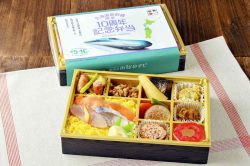Akita Prefecture Holds Self-Promotional Festival, Boasts Food and Performances; Akita University, NTT East Showcases AI Guide
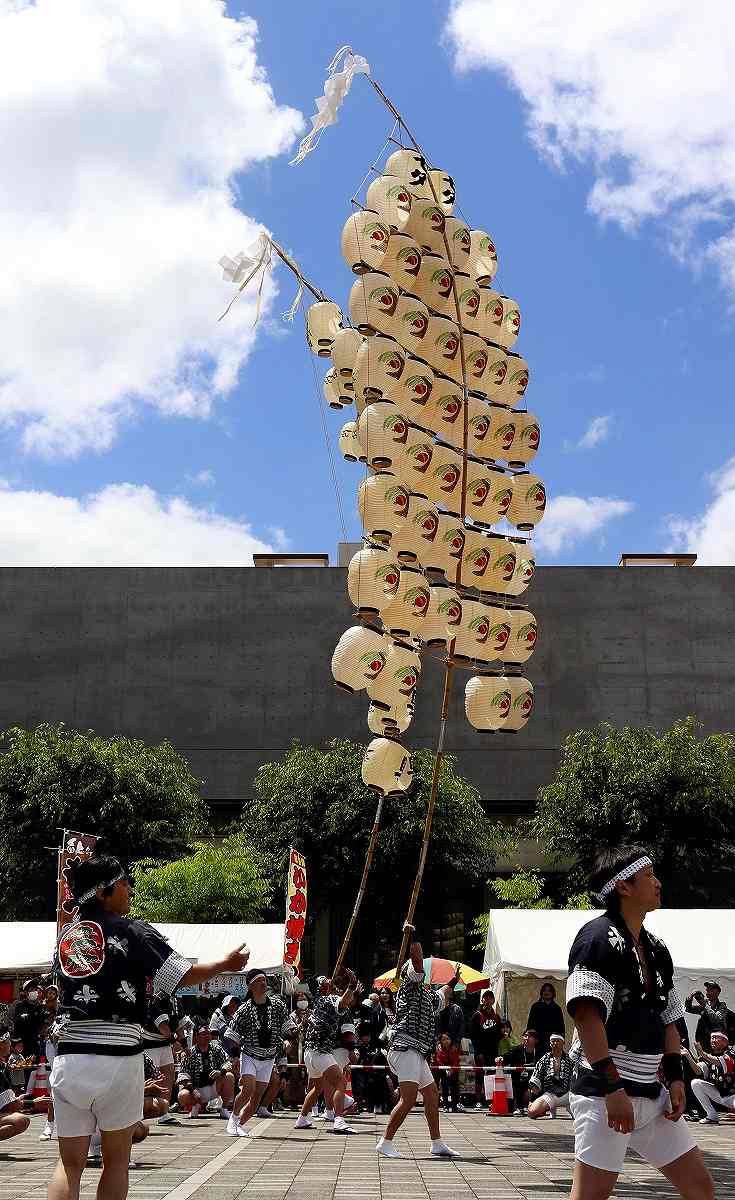
Performers hold giant lanterns at Area Nakaichi on May 25 in Akita City.
12:57 JST, June 19, 2024
AKITA — A festival offering gourmet food and traditional performing arts from all over Akita Prefecture was held on May 25-26 in Akita City.
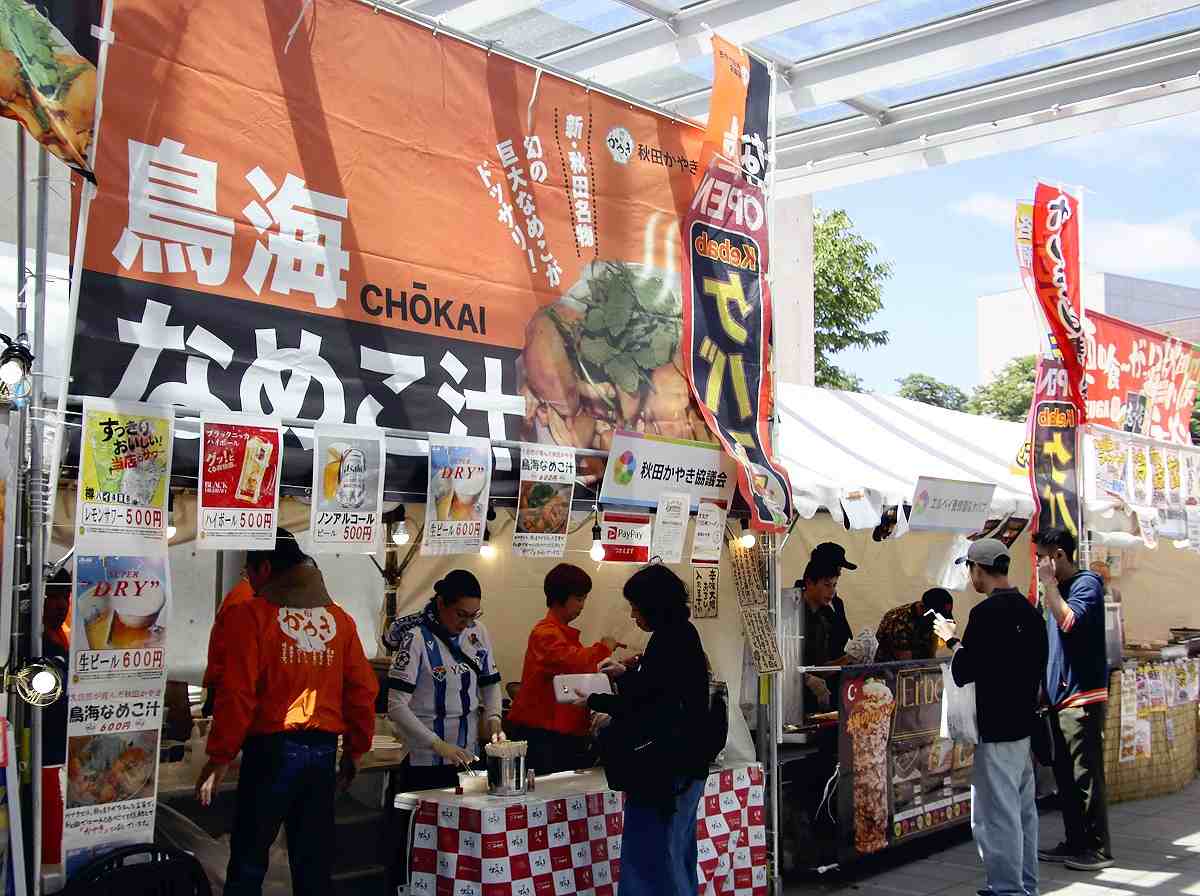
Food stalls in Area Nakaichi
“This is Akita! Food and entertainment festival 2024,” the seventh occurrence of the festival, which began in 2016, took place at four venues this year, including Area Nakaichi in the city’s Nakadori district and a plaza in front of JR Akita Station.
About 20 vendors lined up at Area Nakaichi to sell local specialties like negiyaki — okonomiyaki-like pancakes with shirakami-negi, a famous variety of leek grown in Akita — and Inaniwa udon noodles on May 25.
“Drink a lot and eat a lot,” Gov. Norihisa Satake encouraged people at the opening ceremony.
The two-day festival featured 20 performing arts from 18 municipalities such as the Akita Kanto Festival from Akita City, the Nishimonai Bon Odori from Ugo Town and the Tsuzureko Big Drums from Kita-Akita City.
“It was fun watching the shishi lion opening and closing its mouth,” said a second grader at Nakadori Elementary School, who watched performances with his family.
AI-powered event guide
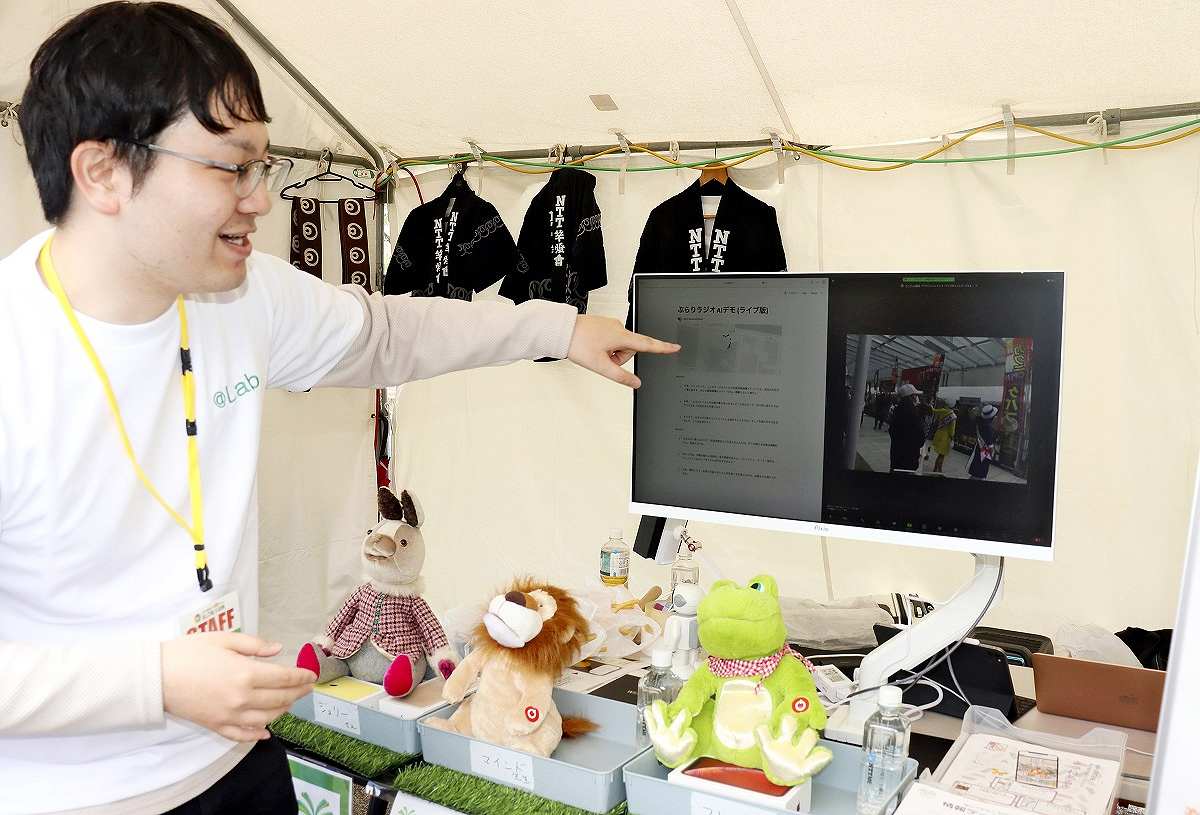
A booth featuring an AI guide program
At the festival, Akita University and Nippon Telegraph and Telephone East Corp.’s Akita Branch set up a booth to showcase their sightseeing guide program powered by artificial intelligence. The AI provided conversational guidance on a screen, saying such things as “A drum performance seems to have just started on the stage,” or “Let’s try meat-wrapped kiritanpo (pounded rice) next,” along with the photos of the venues.
Akita University Graduate School of Engineering Science Prof. Masatoshi Arikawa, who designed the program, said the guide is also available for use via smartphones based on the user’s location, and research is underway for practical use.
“We hope this will be useful for learning about history and other topics in an easy-to-understand conversational style, while making use of existing touristic resources,” Arikawa said.
"Features" POPULAR ARTICLE
-

Sanrio to Open Museum in Yamanashi Pref. Dedicated to Founder, Exhibits Include Hello Kitty, Other Characters
-
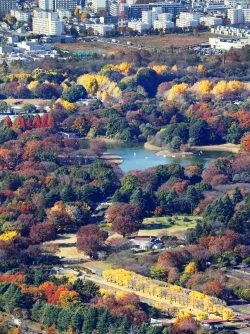
Autumn Foliage Surrounds Visitors to Tokyo’s Showa Kinen Park
-

My Daughter No Longer Speaks to Me, But I Want to See Her and My Grandchild
-
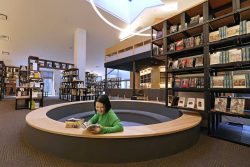
Kumamoto: Public Bath Refurbished as Library Where You Can Chat, Take Photos
-
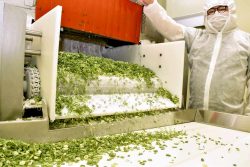
Frozen Vegetables: Demand Rises for Convenient, Tasty Domestic Produce
JN ACCESS RANKING
-

Tokyo Economic Security Forum to Hold Inaugural Meeting Amid Tense Global Environment
-

Keidanren Chairman Yoshinobu Tsutsui Visits Kashiwazaki-Kariwa Nuclear Power Plant; Inspects New Emergency Safety System
-

Imports of Rare Earths from China Facing Delays, May Be Caused by Deterioration of Japan-China Relations
-

University of Tokyo Professor Discusses Japanese Economic Security in Interview Ahead of Forum
-

Japan Pulls out of Vietnam Nuclear Project, Complicating Hanoi’s Power Plans


